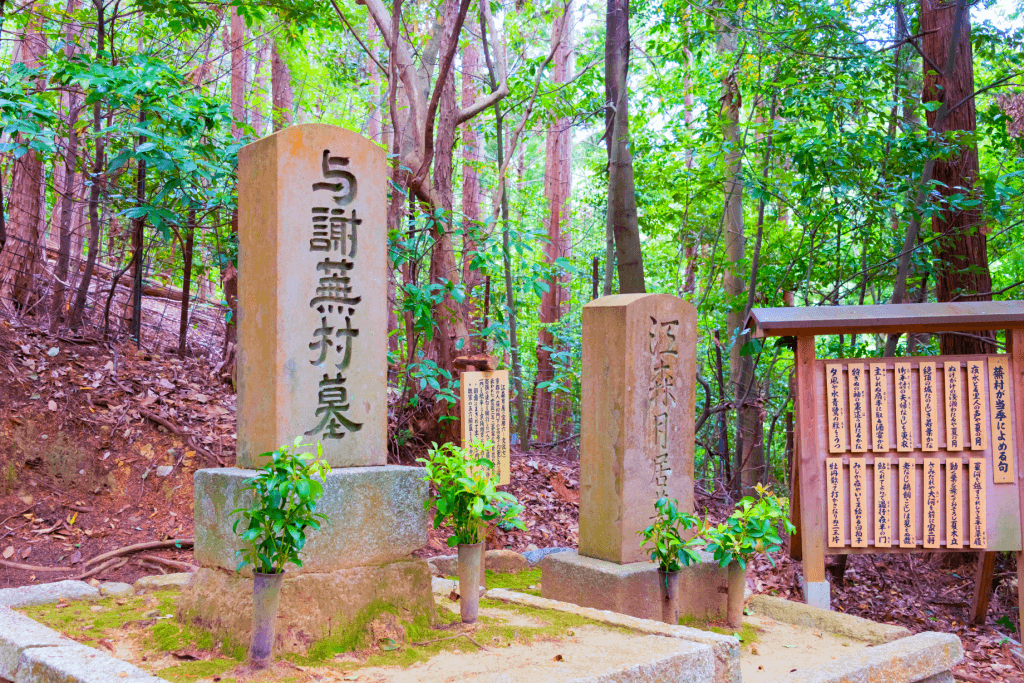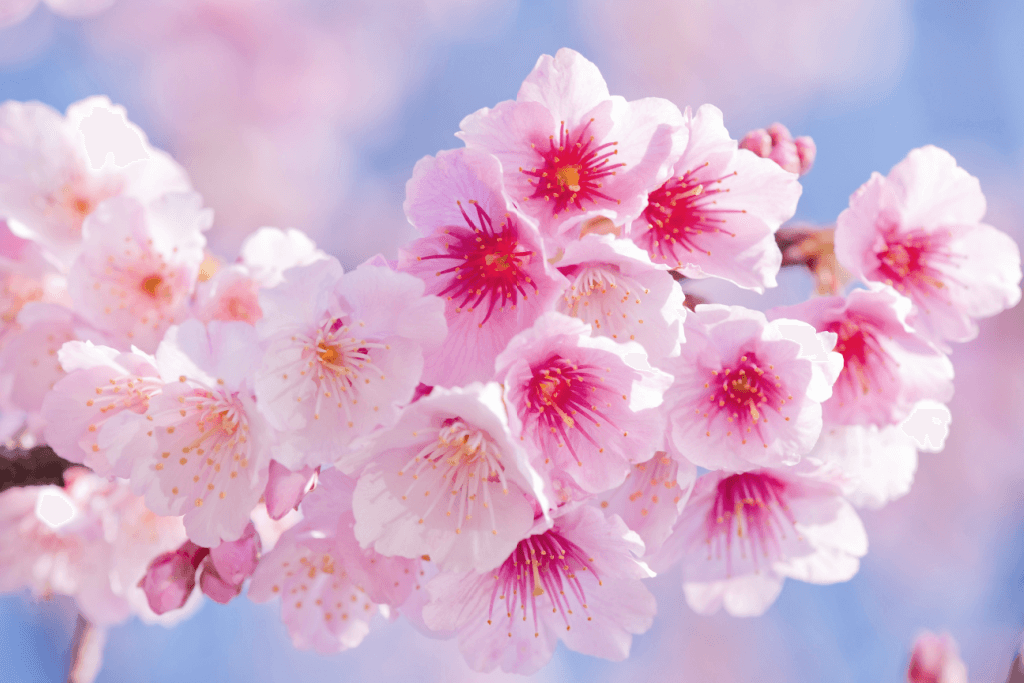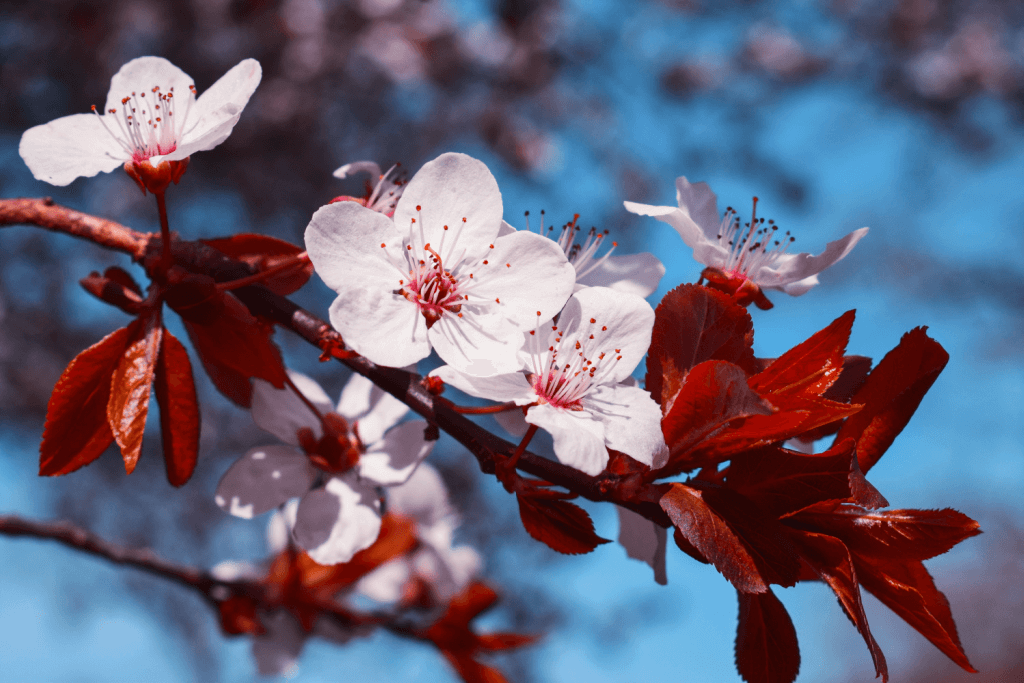What is a lyric in poetry about cherry blossoms? It is a rich tradition that has evolved over centuries of Japanese culture. From classic works of literature to modern-day haiku, poets have captured the sakura’s essence in words, celebrating its beauty and reflecting on its symbolism.
In other words, sakura, or cherry blossoms, are a beloved symbol of springtime in Japan and many other parts of the world. The delicate pink and white blooms covering the trees for a few short weeks each year especially inspire a sense of joy and renewal. Moreover, they establish a poignant awareness of the fleeting nature of life.
Table of Contents
ToggleMurasaki Shikibu
One of the earliest examples of sakura poetry is The Tale of Genji, a classic Japanese novel by Murasaki Shikibu in the 11th century. In one passage, Shikibu writes:
The cherry blossom,
-Murasaki Shikibu
the very season of spring,
is not eternal.

The Tale of Genji is a classic Japanese novel by Murasaki Shikibu in the 11th century. The story follows the life of the titular character, a nobleman named Genji, and is considered one of the greatest works of Japanese literature.

The passage above significantly reflects the fleeting beauty of the sakura, which symbolizes life and mortality in Japanese culture. While the sakura’s full bloom is short, people celebrate them for their beauty and the sense of renewal and rejuvenation they bring to the natural world.
Matsuo Basho
Matsuo Basho was a famous Japanese poet who lived in the 17th century. To that end, many consider him the master of the haiku form, and he wrote many poems that celebrate the beauty of sakura and the changing seasons. One of his most famous haiku reads:
Winter solitude
-Matsuo Basho
in a world of one color
the sound of wind.

Haiku is a type of Japanese poetry that typically consists of three lines with a 5-7-5 syllable pattern and is particularly well-suited to capturing the essence of sakura. While this haiku does not mention sakura specifically, it exemplifies nature imagery and seasonal references familiar in Basho’s poetry.

For this reason, this poem captures the delicate, transient nature of the sakura blooms and the sense of renewal they bring. In any case, the importance of solitude and stillness in this haiku contrasts the joyful and celebratory mood that often accompanies the sakura blooming.
Are you excited about the cherry blossom season? Check out Sakuraco! Sakuraco sends the best of traditional Japanese snacks, sweets, and teas right to your door so you can enjoy the taste of the season right at your home!
Yosa Buson
Another famous sakura poet, Yosa Buson, wrote a haiku that reflects on the melancholy that often accompanies the falling of Sakura petals:
The cherry blossoms
-Yosa Buson
have been falling for days–
and still, they fall.

Yosa Buson was an 18th-century Japanese poet and painter known for his haiku and other Japanese poetry forms. In summary, this haiku reflects the melancholic feeling often accompanying the falling of sakura petals. It truly captures what a lyric in poetry about cherry blossoms is.

Even though people celebrate the blossoms for their beauty, the falling petals can evoke a sense of loss and transience. This poem undoubtedly captures that feeling, as the falling petals continue to fall even after several days. The haiku also uses sakura’s kigo, or seasonal reference, to place the poem within the spring context.
Kobayashi Issa
A haiku by the famous poet Kobayashi Issa reflects the sense of community and togetherness that the cherry blossoms evoke. He was a Japanese poet and haiku master who lived from 1763 to 1828. If you were to ask him what a lyric in poetry about cherry blossoms is, he probably would have said it’s about togetherness.
He is primarily known for his humanistic and compassionate poetry that reflects his deep love of nature and his sympathy for the suffering of others. Issa’s life had many personal tragedies, including his wife’s and children’s deaths. For that reason, his poetry often reflects the pain and grief he experienced.

Issa wrote this haiku in the late 18th century:
In the cherry blossom’s shade
-Kobayashi Issa
there’s no such thing
as a stranger.

The literary meaning behind this haiku is that nature can bring people together and create a sense of community. In addition, the cherry blossom tree provides a space where all are welcome and where strangers can become friends. The image of the cherry blossom’s shade as a place without strangers is a powerful reminder of the importance of acceptance and inclusivity.
Masaoka Shiki
Masaoka Shiki is considered one of the founders of modern haiku. Shiki lived in the late 19th century and early 20th century and was known for his love of nature. To put it differently, he was a Japanese poet and literary critic who played an essential role in developing modern haiku.

That is to say, he was one of the first poets to advocate for haiku as a poignant literary form and encouraged other writers to break with traditional rules and conventions. Shiki’s poetry focuses on the natural world and its vivid sensory imagery.
Therefore, this poem expresses his admiration for the beauty of cherry blossoms and encourages others to come and see for themselves. With this in mind, if you were to ask him what a lyric in poetry about cherry blossoms is, he would focus on the flower’s beauty.
Cherry blossoms in bloom
-Masaoka Shiki
Is there anything more beautiful?
Come and see!

Therefore, the literary meaning behind this poem is the joy of experiencing beauty firsthand. To clarify, Shiki invites the reader to come and see the cherry blossoms in bloom, emphasizing the importance of direct experience and sensory awareness. All in all, this poem also suggests that the beauty of the cherry blossoms can be shared and enjoyed by all.
What is a lyric in poetry about cherry blossoms?
Overall, sakura poetry continues to be a rich and evolving tradition in Japan and worldwide. Moreover, many poets have found inspiration in the beauty and symbolism of the sakura and have used their words to capture the fleeting magic of springtime blooms. Whether through classic literature or modern-day haiku, sakura poetry celebrates life, beauty, and the transience of all things.
Have you read any of these poems? Moreover, are any of these poets some of your favorites? Let us know in the comments below!










